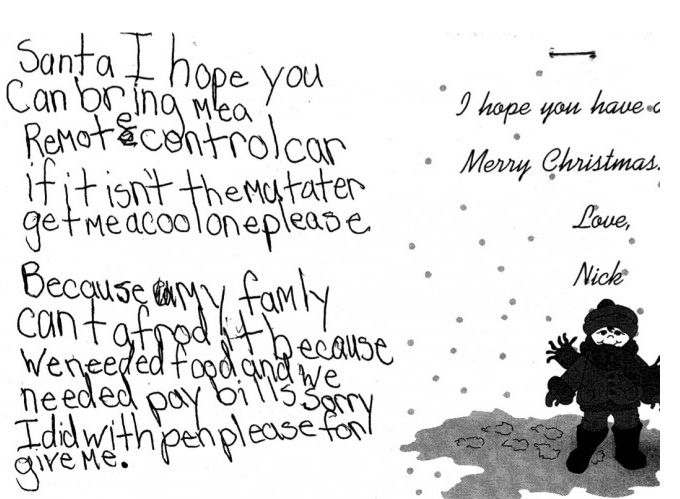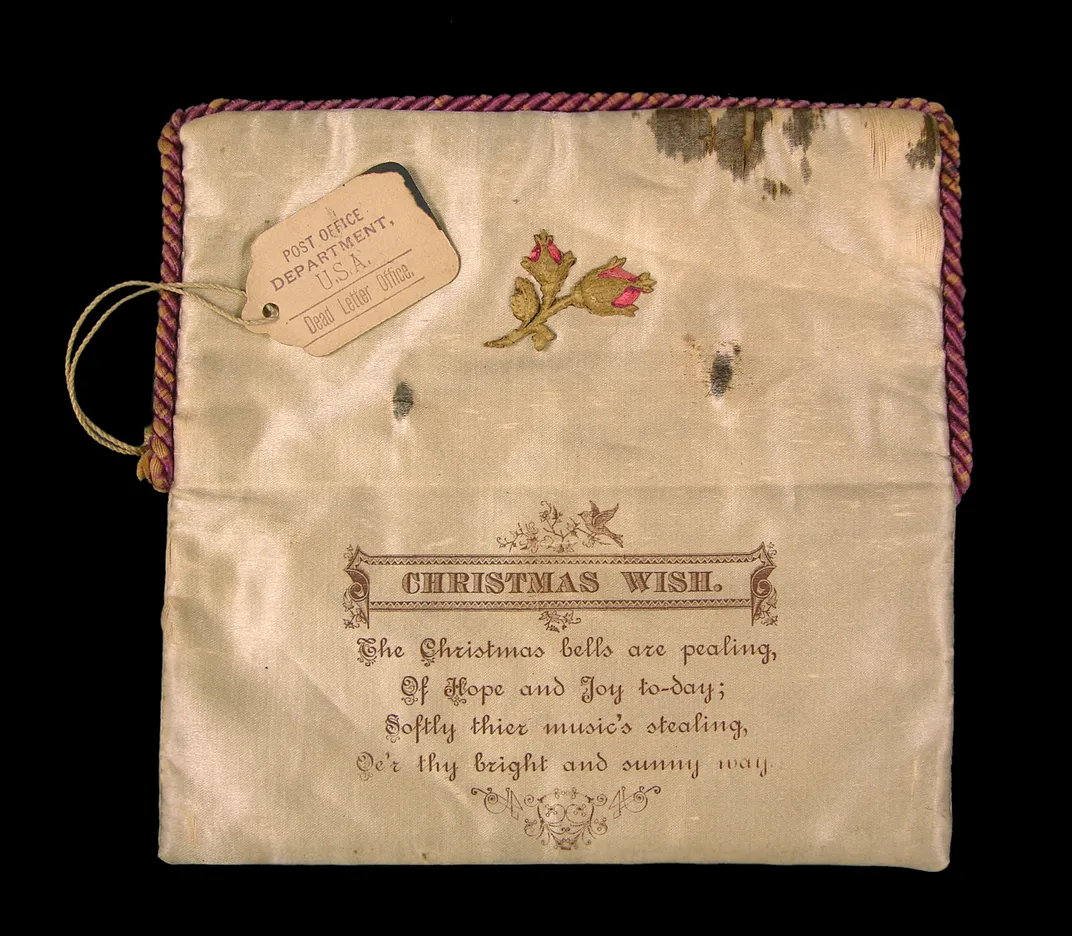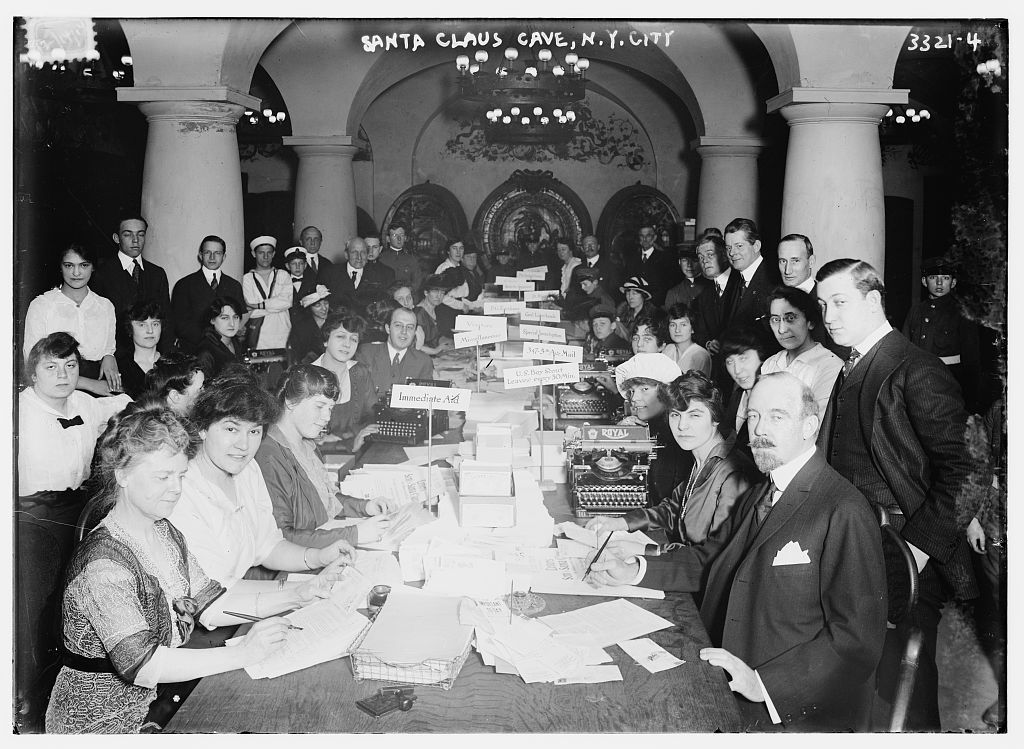What Happens to All Those Letters Sent to Santa?
Believe it or not, most get answered
/https://tf-cmsv2-smithsonianmag-media.s3.amazonaws.com/filer/66/31/6631f08d-6c6b-422e-a39a-d0d533eafba8/ducks1948-roy-rogerscrop.jpg)
Writing a letter to Santa Claus has been a tradition in America, well, since, at least it was possible to mail a letter, and likely long before.
Prior to the establishment of the United States Post Office in 1775, American children would burn their missives to Santa, believing that the ashes would rise up and reach him, says Nancy Pope, curator of postal history at the Smithsonian’s National Postal Museum in Washington, D.C.
Today, despite the advent of more modern communications like email and texting, hundreds of thousands of children, from all over the globe, continue to send their Christmas wish lists to Santa using old-fashioned snail mail. And incredibly, many of those letters are actually answered.
To deal with the annual deluge, the United States Postal Service (USPS)—Santa’s primary ghostwriter (aside from parents)—created Operation Santa in the early 20th century, which allowed postmasters to answer the letters. This year, the USPS joined the 21st century, making it possible for kids to email Santa—at least in New York City.
New York is where Operation Santa got its start around 1907, but it was not in full swing until 1913. The following year, the postmaster in Santa Claus, Indiana, also began answering letters from children, says Emily Thompson, director of the town’s nonprofit Santa Claus Museum and Village. The Museum answers letters sent to the town, and also those from the area that are addressed to Santa or the North Pole.

Surprisingly, the Internet Age has not put a damper on first class mail received by the museum. “Our letter volume has increased over the years,” says Thompson.
Santa was first depicted in print in the U.S. in 1810 in an image commissioned by the New York Historical Society, writes Alex Palmer, author of The Santa Claus Man. During that early 19th-century period, Santa was more of a words-to-live-by-dispensing moralist than a present-bringing capitalist, he says.
In 1871, Santa went viral when Harper’s Weekly cartoonist Thomas Nast created an iconic image depicting Santa Claus at his desk piled high with letters from the parents of naughty and nice children. Palmer says Nast also popularized the notion that Santa Claus lived in the North Pole. In 1879, Nast drew an illustration of a child posting a letter to Santa.
/https://tf-cmsv2-smithsonianmag-media.s3.amazonaws.com/filer/df/16/df16c06f-88ba-4f2c-be6e-bcb6b26814fb/f4m587.jpg)
The Nast cartoons fueled the nation’s imagination, and the Postal Service soon became the vehicle for children’s most fervent Christmas wishes. The Postal Service wasn’t exactly equipped for the job, says Pope. At first, letters addressed to “Santa” or “The North Pole” would mostly go to the Dead Letter Office (DLO), as “they were written to someone who, ‘spoiler alert,’ does not exist,” Pope says.
The concept of a Dead Letter Office—to deal with letters and packages with illegible or non-existent addresses, no return addresses, or improper postage—has existed at least since the first Postmaster General, Benjamin Franklin, Pope says. A handful of such offices were established in the 19th century and early 20th century, with the main DLO being in Washington, DC. A few clerks—almost entirely women at the turn of the 20th century—would sort through the dead letters and burn the ones that could not be returned.
It was harder to burn packages, especially as they were often filled with interesting items—like skulls, reptiles, even a big box of brass knuckles, says Pope. Washington’s DLO took to displaying the oddities in glass cases. Eventually the USPS transferred those curiosities to the Smithsonian Institution, which added them to its collection. Among those, and now in the collections of the National Postal Museum, was a soft silk pouch outlined with brocade and emblazoned with “A Christmas Greeting” in the address portion. When flipped open, the pouch revealed a similarly printed “Christmas Wish.”
“We have no clue who sent it, when, how, why, to whom—all we know is it didn’t make it,” because it was at the DLO, says Pope.

Meanwhile, the pile-up of Santa letters at the DLO each year—and subsequent burning— became a source of angst. They couldn’t be delivered because they were addressed to the North Pole or to some other non-existent address. In some towns, postmasters answered the letters—which they had intercepted locally. “It was illegal for them to open the letters, but nobody was prosecuted that I know of for this,” says Pope.
In 1907, Theodore Roosevelt’s Postmaster General, George Von L. Meyer gave the nation’s postmasters the option to release the letters to individuals or charitable institutions to answer. But, by 1908, the Postal Service was hit by accusations that letter writers weren’t being properly vetted, leading to some perhaps ill-gotten gains. The policy was reversed and Santa letters were again sent off to the DLO. In 1911, a new Postmaster General granted unofficial permission for local post offices to again try their hand at answering Santa letters.
By 1912, Postmaster General Frank Hitchcock made it official with Operation Santa—if the postage had been paid, individuals and charitable groups could answer letters to Santa. Operation Santa gave rise to the Santa Claus Association in New York. That group found volunteers to answer letters and deliver gifts to children. The program was a huge success, but by 1928, the founder of the association, John Gluck, was found to have scammed hundreds of thousands of dollars from its coffers, says Palmer.

Over the decades, the Postal Service has taken steps to ensure that both letter writers and the volunteers who purchase gifts for children are not engaged in criminal or other nefarious activity. Children can reach out to Santa in multiple ways. Parents can take their kids’ letters and mail them to an address in Anchorage—which houses a gargantuan postal processing facility designed to deal with Santa mail. That guarantees a postmark on the return letter from the North Pole.
Letters with postage and an address of the North Pole or Santa Claus are usually routed to one of 15 regional post offices that participate in Operation Santa. Volunteers who live in the vicinity of those 15 locations pick out a letter to answer (all personal identifying information is removed) and buy a gift for the child, which they bring to the post office. It is then delivered by the USPS. Thousands of other post offices participate, but postal employees only respond to letters; they don’t send gifts, says USPS spokeswoman Darleen Reid-DeMeo.
The New York post office receives some 500,000 letters each year. This year, some of the letters were digitized and posted on delivercheer.com, which lets volunteers select letters online. Packages still have to be brought in person to the main James A. Farley post office on 8th Avenue at Penn Station in Manhattan, says Reid-DeMeo.
“We try our very best to get all the letters answered,” she says. “Unfortunately, because we receive so many, it’s just not possible.”
The 200 or so volunteer “elves” at the Santa Claus museum in Indiana respond to about 20,000 letters each year, some of them mailed, and some of them written onsite at the nonprofit museum. Parents or other adults can also print out templates of letters from Santa at home.
Thompson says that even though the mail volume has increased over the last few years, the letter writing tradition may be on its way out. In 2016, in a sign of the times, the museum began instructing volunteers to only use block letters when writing, as most children can no longer read cursive, she says.
Letters allow an opportunity to tell a story, she says, noting that many children take the time to write about their days or their siblings or parents. Handwritten responses are valued by those children, too, she says, noting that today’s kids don’t exactly receive a ton of mail.
Some commercial websites promise emails from the North Pole or video calls with Santa—perhaps hastening the demise of the old-fashioned paper response. Hand-written letters from Santa or anyone else “may become an increasingly important and rare thing,” says Thompson.
Pope agrees, noting that letter writing declined in the 1970s and 1980s, and then post cards went out of vogue. “Now we have a generation that finds email bulky,” says Pope, although she notes that there’s minor interest among millennial women in a “romantic rebirth of letter writing.”
Even so, Pope wonders, “what’s the next step? Is it totally emojis?” 🎅🏼
/https://tf-cmsv2-smithsonianmag-media.s3.amazonaws.com/accounts/headshot/AliciaAult_1.png)
/https://tf-cmsv2-smithsonianmag-media.s3.amazonaws.com/accounts/headshot/AliciaAult_1.png)